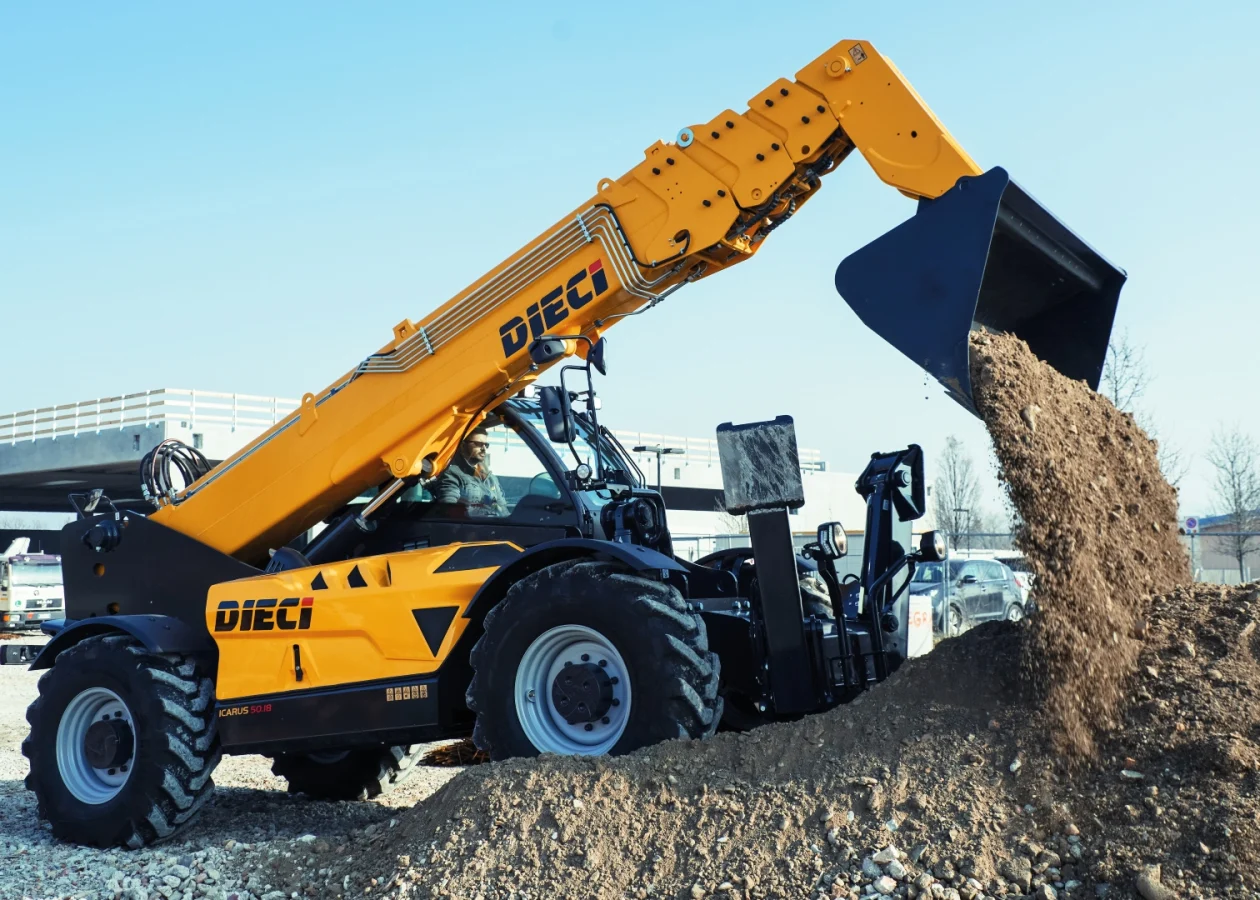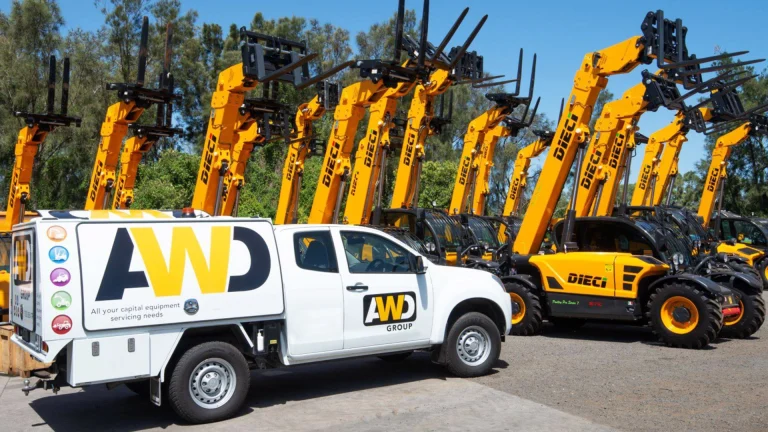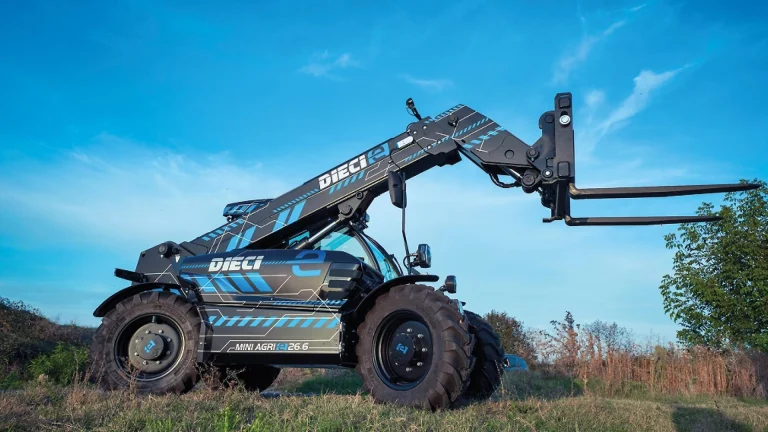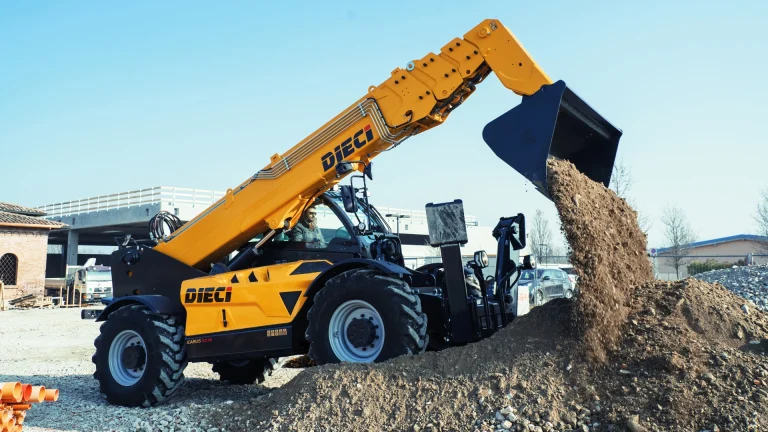Operating a telehandler isn’t just about lifting loads, it’s about protecting lives. These powerful machines play a critical role on worksites across Australia, but they also come with serious safety responsibilities. From daily checks to operator behaviour, this guide outlines the best practices for safe, compliant telehandler operation; plus how Dieci helps you meet those standards every day.
Why Telehandler Safety Is Non-Negotiable
Telehandlers are classified as high-risk equipment. When used incorrectly, they pose risks of rollovers, crushing injuries, tip-overs, and load failure. According to Safe Work Australia, improper use or lack of operator training is a leading contributor to mobile plant incidents.
Typical accidents include:
- Overreaching loads beyond stability point
- Operating on uneven or sloped terrain
- Carrying passengers unsafely
- Failing to detect mechanical issues during pre-start checks
Implementing consistent safety protocols significantly reduces these risks—and keeps both operators and teams safe.
Top Operator Habits That Prevent Accidents
Safe operation starts with good habits:
- Pre-start inspections before every shift (fluids, tyres, forks, boom)
- Know your limits: Always check the load chart for your model
- Operate smoothly: Avoid jerky movements, sudden stops, or tight turns under load
- Watch your footing: Avoid operating on soft soil, gradients, or near edges
- Never carry passengers unless the machine is rated for it (most aren’t)
Your Telehandler Safety Checklist
Whether you’re a supervisor or operator, this checklist should be standard:
Machine Checks:
- Tyres inflated and free from damage
- Hydraulic oil, coolant, and engine oil topped up
- Boom movement tested with no jerks or noise
- Lights, horn, reversing alarm, seatbelt, and safety interlocks tested
Site Assessment:
- Identify overhead powerlines or low clearance
- Mark slopes, drop-offs, and unstable edges
- Control pedestrian access and traffic management
Operator Readiness:
- Valid ticket or license (e.g. LF or CN class in Australia)
- Induction to the specific machine and site
- Fit-for-duty assessment (PPE, hydration, focus)
Load Handling: How to Stay Stable and In Control
Many accidents occur during lifting because of unbalanced loads or poor boom control.
Key principles:
- Know your load weight before lifting
- Use stabilisers on soft or uneven ground
- Keep boom low while travelling to lower the centre of gravity
- Extend boom only when stable and on level ground
- Avoid side lifting or swinging loads without control
Dieci machines are equipped with load monitoring systems and well-defined load charts to support safe decisions.
Weather, Terrain, and Visibility Factors
Telehandler performance and safety can change based on conditions:
- Wind: High wind can destabilise extended booms
- Rain and mud: Reduce traction, increase stop distance
- Glare or dust: Impair operator visibility, increasing collision risk
- Poor light or blind zones: Use spotters or radios to guide operations
Always reassess your environment throughout the day. What was safe at 9 am may not be safe after a sudden rainstorm or delivery arrival.
How Dieci Supports Safe Operation
Dieci telehandlers are designed with operator safety at the core:
- High-visibility cabins with wide-view windows and ergonomic seating
- ROPS/FOPS compliance for rollover and falling object protection
- Onboard load sensors and indicators to reduce overloading risk
- Hydrostatic transmission for smooth, precise control
- Comprehensive user manuals and safety resources to train operators
Backed by AWD Australia and a nationwide Approved Service Agent (APSA) network, Dieci owners also have access to inspection support, parts supply, and servicing.
👉 Explore our telehandler range and safety features
Need Help With Site Safety or Operator Guidance?
If you’re unsure how to set up your site or brief your team for safe telehandler operation, we can help. Contact Dieci Australia or access model-specific safety resources from our technical library.
How do you operate a telehandler safely?
Always perform daily checks, know your load limits, and work on stable ground. Use stabilisers when needed and avoid overreaching. Dieci telehandlers include safety features like ROPS cabins, load sensors, and ergonomic visibility to help prevent accidents on Australian sites.






